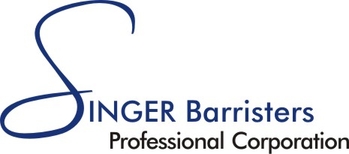Recently, 407ETR has launched a full frontal assault against thousands of former users whose accounts are anywhere from 4 to 12 years old. Almost all of these individuals have been in plate denial, unable to renew their licence plate sticker or obtain new plates, for more than 2 years. Some of these individuals believed that those old accounts were paid. Others, knowing that their long ago invoices were relatively small numbers in the hundreds or low thousands, and wanting to pay if only they could determine which charges were properly attributable to them, had attempted for years to sort out billing discrepancies before paying the invoice. Yet after more than 10 years in many cases, 407 has been unwilling or unable to answer their queries as to why they were charged for trips they didn’t take; for trips which occurred months or years after they moved out of the province; trips after they returned the transponder or gave back the plates under which the non-transponder account was registered. Imagine their shock when they opened the most recent collection notices and saw that they now owed anywhere from 100% to 1000% more than the original unproven amount of the debt.
These former customers are now receiving collection notices from a law firm representing the 407. This law firm is well aware that court proceedings cannot be commenced against these alleged toll debtors, as the time limit for issuing a court action has expired. These firms, on behalf of 407, are simply going to keep the file in a perpetual state of “collections”. This means that the previously invoked plate denial can remain in force, and that 407 can pursue aggressive collection actions, including repeated telephone calls, letters, credit bureau reporting, and the usual aggressive, annoying, and questionable techniques employed by the collection industry.
Yet debtors who call these firms and demand an accounting of the charges so they can reconcile what they are being expected to pay are met with silence. This is not the fault of the law firm acting for 407. It only acts for a client who has failed to provide the firm with the necessary background on each file, with the firm receiving only minimal information and a current debt total.
Most people cannot afford a lawyer to go to court and fight the 407 so they are reluctantly entering into settlements in order to resolve the matter and get the plate denial removed from the MTO database. I am aware of individuals who have successfully negotiated a settlement with 407 for as little as 25% of the debt.
If you find yourself in this situation and choose to settle with the 407 or its lawyer or collection agency, don’t assume that because you send them a cheque that the matter is done. In theory it should be. But the toll highway operator has shown repeatedly over the years that it cannot be relied upon for proper record keeping. Further, it seems every couple of years it engages new collection agencies and/or law firms to handle the old debt collection.
So, if faced with a demand for payment and you are prepared to make a deal, by all means do so. While there is much to be gained from fighting a legal battle on the basis of principal, standing up to the bully, public interest, etc., it may be cost prohibitive to do so. As such, settlement may make, depending on the amount at stake, eminent good sense. But be advised that you should only provide the settlement funds if the collection agency/law firm/407 agrees to provide you with the following:
1. A one page legal document called a Satisfaction Piece. This document is your ongoing proof that the debt is deemed settled in full, regardless of how much you actually paid.
2. Confirmation that the plate denial will be removed
3. A copy of 407’s direction to the Ministry of Transportation removing you from plate denial.
4. Confirmation that no negative information has been put on your credit bureau.
5. In the event you are already aware of a negative credit report, then a letter from 407 to Equifax and TransUnion confirming that the negative credit report was place “in error” and should be deleted.
Next time, I will reveal a simple $500 solution to get the 407 off your back.
Darryl Singer is a lawyer with 22 years litigation experience and a particular interest in taking on the 407. He practises as senior counsel with SINGER Barristers Professional Corporation in Markham. www.darrylsinger.com
